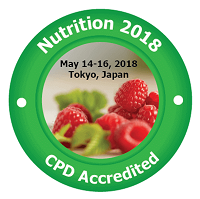
Ayaulym Nurgozhina
Junior researcher at National Laboratory Astana
Title: Food Frequency Questionnaire and FETA software to assess the dietary intake among Patients with Metabolic Syndrome
Biography
Biography: Ayaulym Nurgozhina
Abstract
Patients from 25 to 75 years old with and without metabolic syndrome answered food frequency questionnaire. Total number of participants was 84. Questions covered all food preferences, daily intake number of fruits, beverages, milk products, etc. More than 120 food products are listed in the survey. The aim of the study was to identify intakes of different Vitamins in two groups by age. After questionnaire FETA tool was used to analyze all answers (http://www.srl.cam.ac.uk/epic/epicffq/). It is a tool to calculate nutrient and food group data from food frequency questionnaires. This research offered to see differences in more than 20 Vitamins in all age groups and patients with metabolic syndrome and healthy ones. The results showed differences in Vitamins by groups and gender. Patients with metabolic syndrome consume food almost twice more than healthy patients. Therefore, indicators of vitamins were much higher than normal index. For example, Iron’s Recommended Dietary Allowance is 8 mg however male patients with metabolic syndrome aged 60-75 have 23 mg per day as an average value. Recommended Dietary Allowance of each vitamin and mineral was compared with the values from the food frequency questionnaire. It was very important to find which product is responsible for the appearance of the vitamin index in the FETA software results. Moreover, it was suggested to add some more products which are common for Central Asian population such as horse meat, mare’s milk, etc. The results allowed concluding that a high accuracy of the FFQ FETA was achieved. This tool for converting food frequency questionnaire data into nutrient and food group values can be used widely for different study populations.

